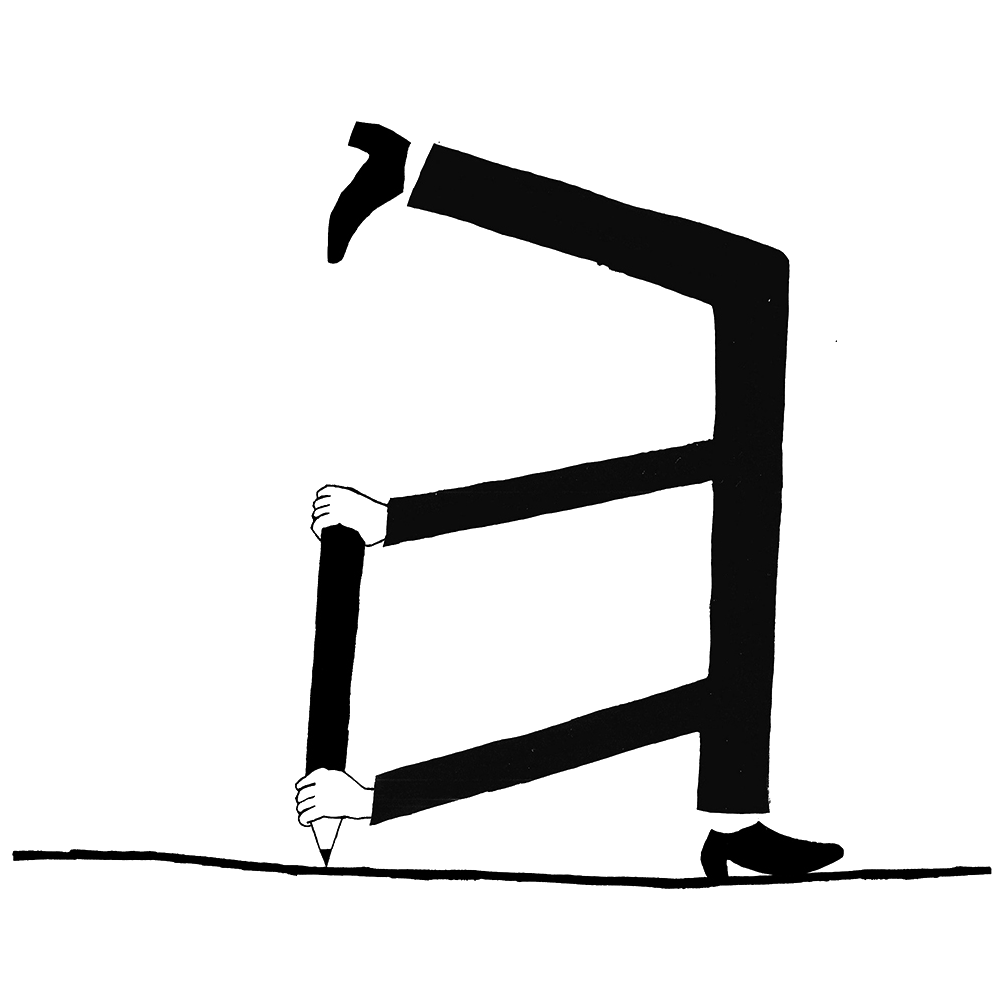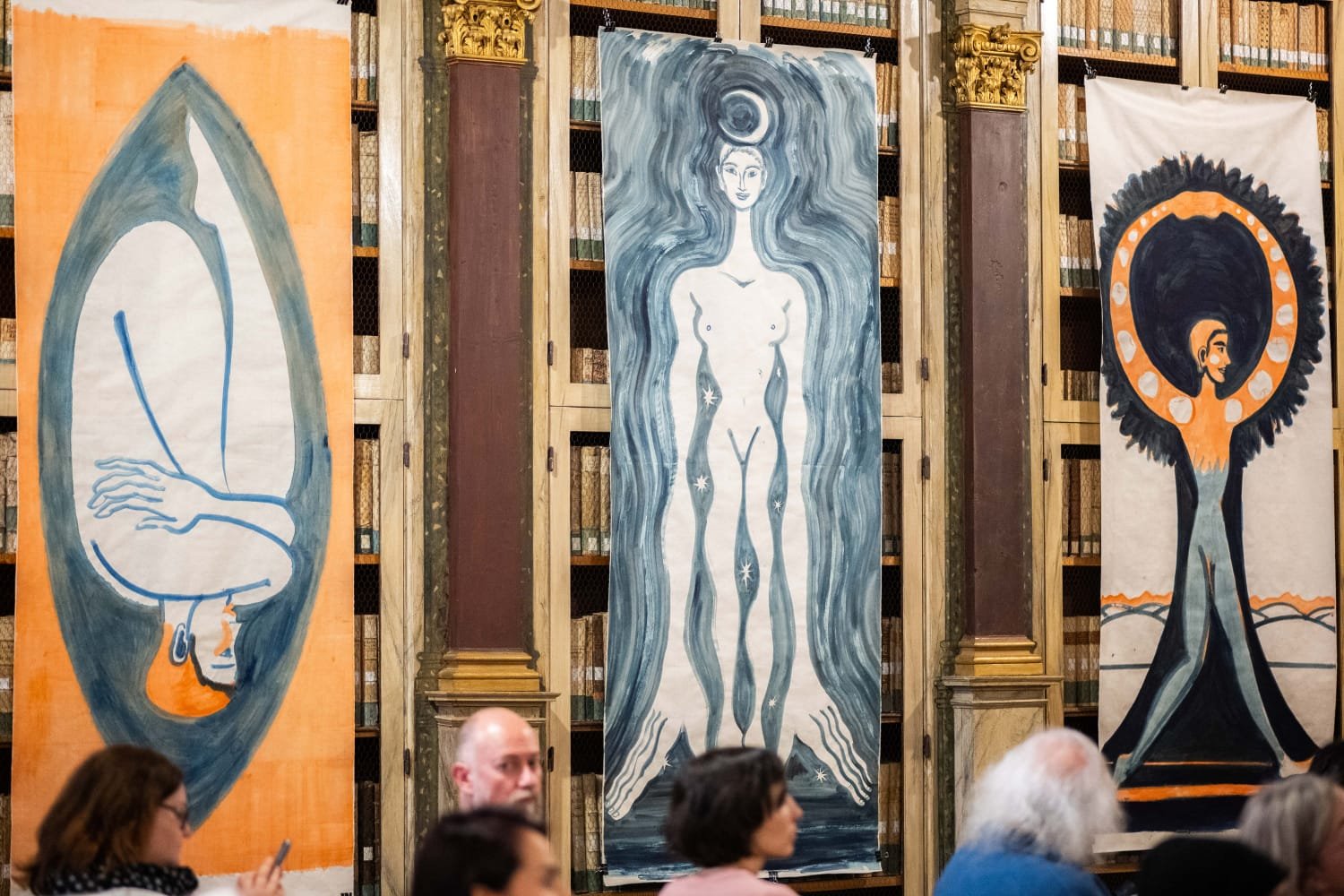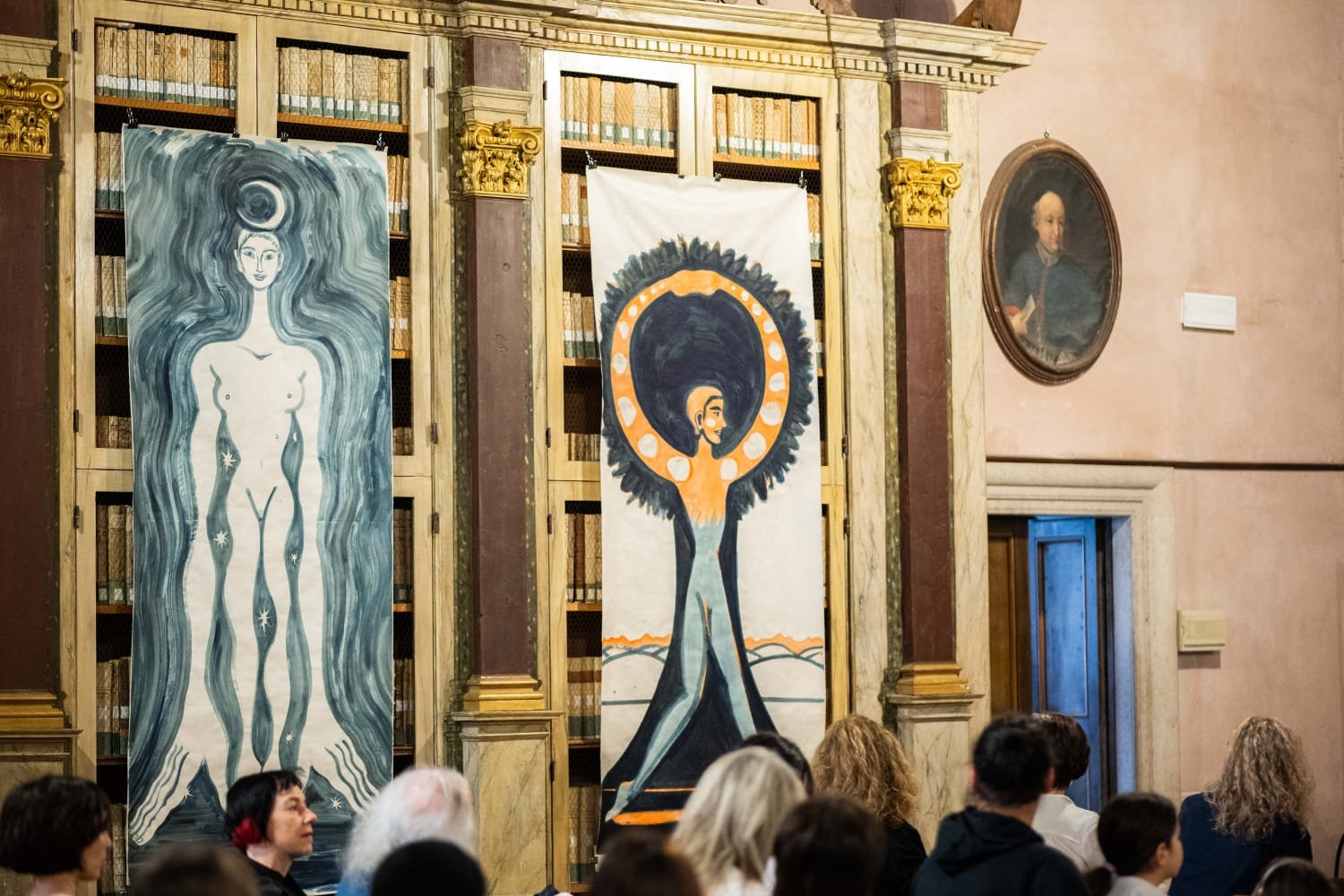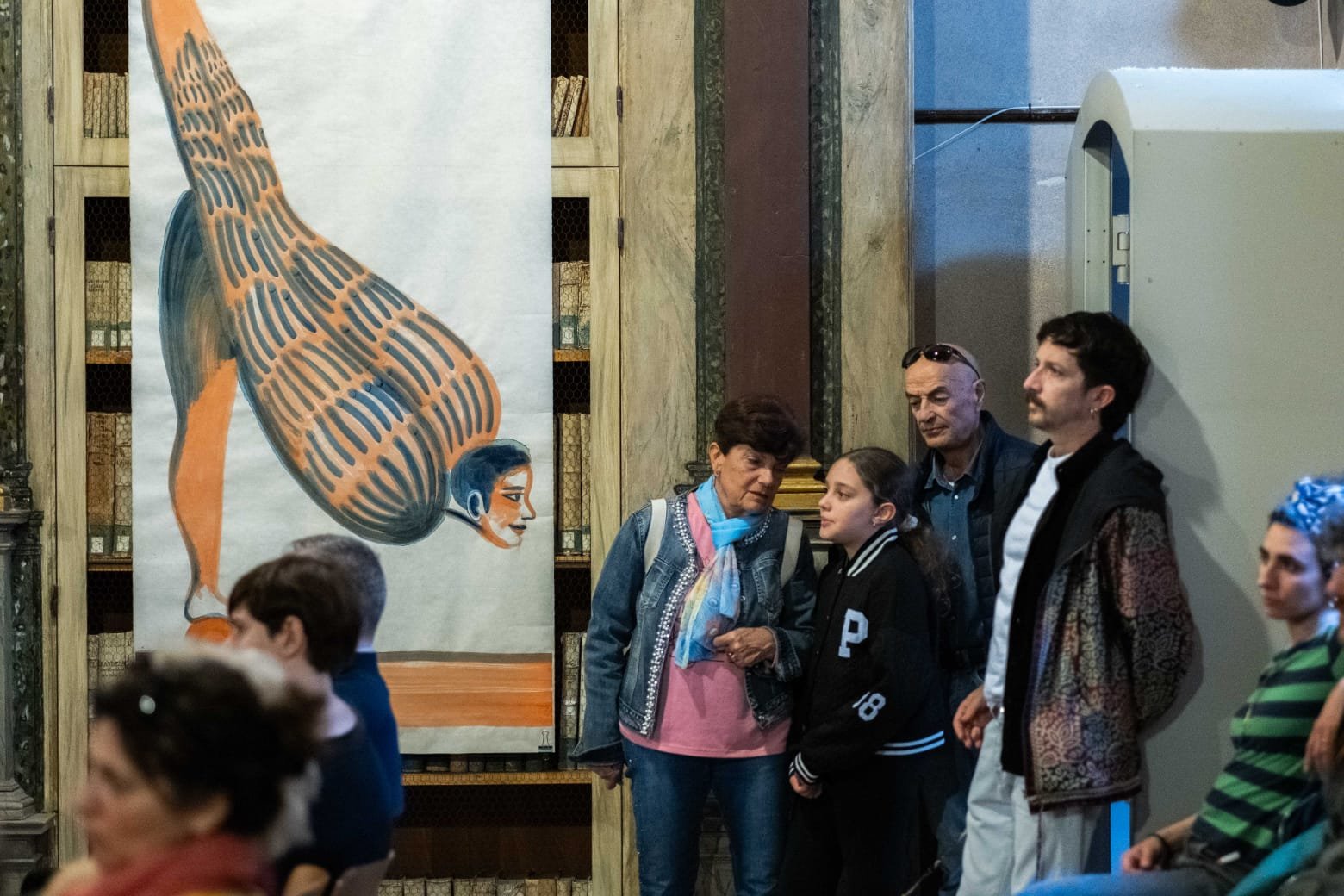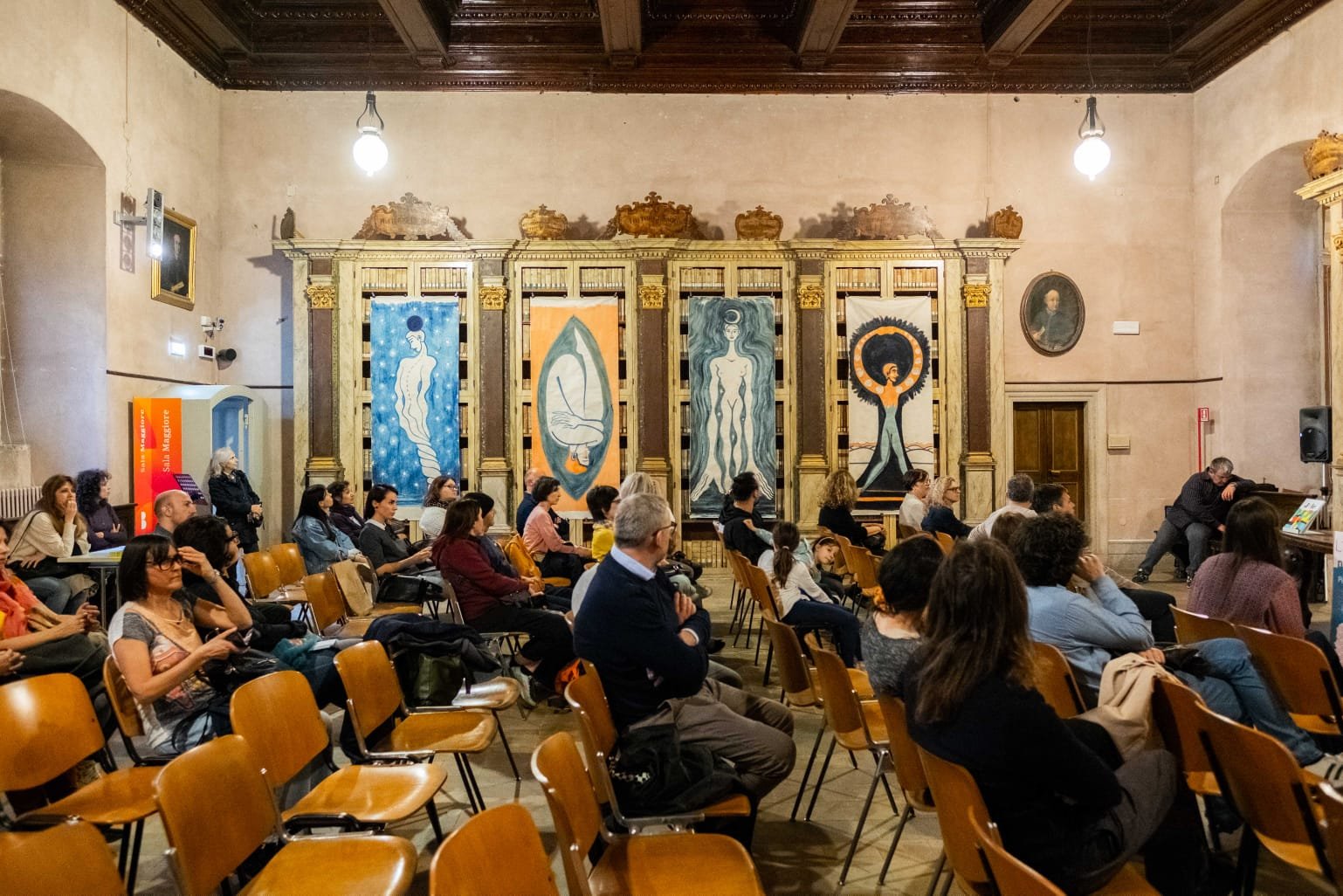Una Danza Circadiana
14/04/2024 - 11/05/2024 - Biblioteca Planettiana, Jesi (AN)
Arianna Vairo propone un nuovo ciclo di otto opere di grandi dimensioni, concepite per gli spazi della Biblioteca Comunale Planettiana di Jesi. Si tratta di otto fogli di carta giapponese che Vairo srotola dall’alto in basso rivelando delle figure imponenti. Come nella tradizione pittorica giapponese di paesaggio, in cui lo sguardo si muove sulla carta per seguire il percorso di un uccello che sorvola un acquitrino, così questi rotoli suggeriscono come guardare queste figure. Dall’alto in basso, le figure connettono la terra e il cielo, il mondo interiore e quello della natura e del cosmo. I colori puri, talvolta sovrapposti, corrispondono a questi contrasti perpetui: il blu profondo della notte e l’arancione della terra. Queste figure hanno tratti umani ma trascendono i confini del proprio corpo, pronte a unirsi con altre specie o con altre entità. Un intero corpo si trova racchiuso da una forma a mandorla; dalla punta delle dita può sgorgare un fiume; le braccia sollevate a cerchio diventano la chioma di un albero di mele; sulla fronte può sorgere la luna... Sono figure in piena metamorfosi: ad alcune si stanno moltiplicando gli arti, ad altre crescono mani grandi come ali. Sono infine figure mobili, che si agitano nello spazio della carta, come spinte verso l’alto da un’energia celeste, o attratte verso il basso da una potente forza di gravità. Lo aveva scritto Walter Benjamin in alcuni appunti sul rapporto tra grafica e pittura: il disegno è per sua natura orizzontale, perché orizzontale è il foglio nel processo di produzione, e così resta sempre libero dalla parete e dall’architettura. Il cielo in pittura è sempre in alto, ma nel disegno può trovarsi anche per terra, come ad esempio quando si disegna con il gesso sull’asfalto. Il disegno conquista il cielo e lo riporta in relazione con la terra. Per questo – conclude Benjamin – ‘la grafica rappresenta il mondo in modo che l’uomo possa entrarvi dentro’. Il lavoro su carta, che non adopera il cavalletto, si rivolge alle capacità motorie dell’artista e dello spettatore, oltre che a quelle ottiche. Per questo, pur essendo allestite sulle pareti, le grandi carte di Vairo sono comunque in movimento, libere dalla parete, in connessione con altri cieli. Ecco l’invito di Arianna Vairo con le figure di Circadiana. Otto presenze, o forse otto modi di essere nel mondo, o forse ancora otto fasi del nostro stare al mondo, che si ripetono per ogni abitante del pianeta Terra.
Camilla Pietrabissa
Arianna Vairo proposes a new cycle of eight large-scale works conceived for the spaces of the Planettiana Municipal Library in Jesi. These are eight sheets of Japanese paper that Vairo unrolls from top to bottom revealing imposing figures. As in the pictorial tradition Japanese landscape painting, in which the eye moves over the paper to follow the path of a bird flying over a marsh, so these scrolls suggest how to look at these figures. From top to bottom, the figures connect earth and sky, the inner world and that of nature and the cosmos. I pure colors, sometimes overlapping, correspond to these perpetual contrasts: the deep blue of the night and the orange of the earth. These figures have human features but transcend the boundaries of their own bodies, ready to unite with other species or entities. A whole body is found enclosed by an almond shape; a river may flow from the fingertips; arms raised in a circle become the crown of an apple tree; on the forehead may rise the moon.... They are figures in full metamorphosis: some are growing limbs, others are growing hands as big as wings. Finally, they are moving figures, flitting through the paper space, as if pushed upward by a celestial energy, or drawn downward by a powerful force of gravity.WalterBenjamin in some notes on the relationship between graphics and painting: drawing is by its very nature horizontal, because horizontal is the sheet in the process of production, and so it always remains freefrom the wall and architecture. The sky in painting is always above, but in drawing it can be also on the ground, such as when drawing with chalk on asphalt. The drawing conquers the sky and brings it back into relationship with the earth. Therefore,” Benjamin concludes, ”drawingrepresents the world in such a way that man can enter into it'.The work on paper, which does notemploys the easel, addresses the motor skills of the artist and the viewer, as well as the optical ones. Therefore, although set up on the walls, Vairo's large papers arenevertheless in motion, free from the wall, connecting with other skies.Here is Arianna's invitationfull metamorphosis: some are growing limbs, others are growing hands as big as Eight presences, or perhaps eight ways of being in the world, or perhaps still eight phases of our being in the world, which are repeated for every inhabitant of planet Earth.
Camilla Pietrabissa
———————————————————
pictures by Diego Capomagi
